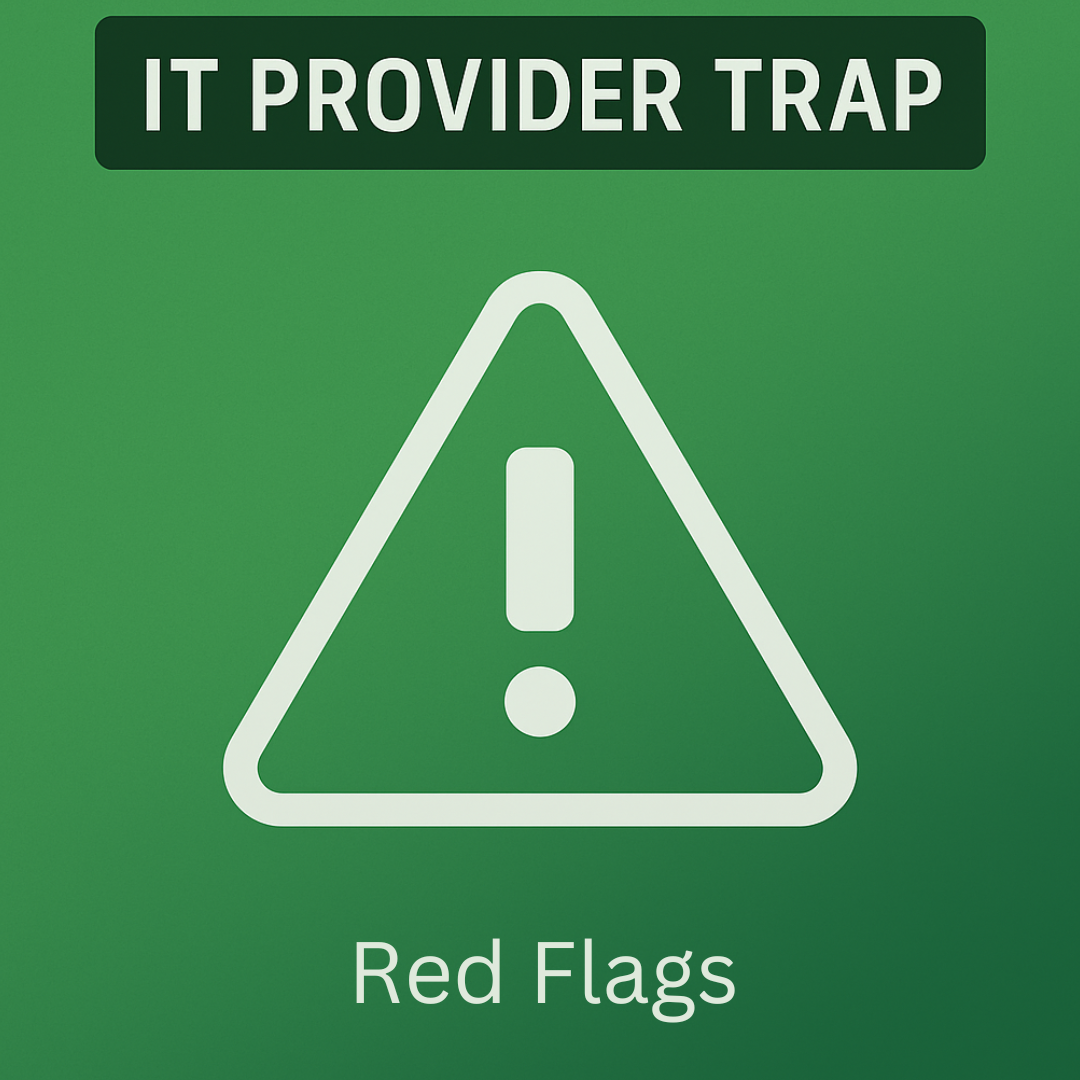Some warning signs are obvious—slow response times, surprise charges, tools that keep breaking. But others are easier to miss until they’ve already cost you time, money, or trust.
This isn’t about nitpicking. It’s about giving you a sharper lens to spot providers who might be putting your business at risk, even if things seem fine on the surface.
Watch for These Behaviors
1) Security = checkbox
If your provider’s idea of “doing security” stops at antivirus, you’re exposed. Real protection means:
- Backups that are monitored and tested
- Multi-factor authentication in place where it counts
- Patching done consistently
- Security layers that evolve with threats
If they can’t explain your current protections or show how they’re monitored, that’s not just a hole—it’s a liability.
2) Vague or defensive answers
Ask what’s included in your agreement—or what’s not—and listen carefully to the response. If you get attitude, legalese, or hand-waving instead of clear answers, that’s a problem.
You deserve straight talk about scope, billing, documentation, and risk. If your provider bristles when you ask basic questions, imagine how they’ll handle a crisis.
3) Jargon walls and shame tactics
Support shouldn’t make your team feel dumb. Whether it’s sighs over the phone, jargon-heavy replies, or a tone that implies “you should know this,” those interactions chip away at trust.
Eventually, your team stops asking for help—and starts finding risky workarounds instead.
4) No documentation talk
If you ask where your IT documentation lives and the answer is “we’ve got it,” dig deeper.
- Is it current?
- Who can access it?
- What’s the handoff process if your provider changes?
If that feels like pulling teeth, your business isn’t protected during transitions or emergencies.
5) They never ask about your goals
IT that isn’t tied to business outcomes is just noise. If your provider only talks about “what’s broken” and never “where you’re headed,” they’re not being strategic—they’re just keeping the lights on.
The best IT relationships start with curiosity and stay aligned with your business priorities.
6) The references are too perfect
Everyone has testimonials. But ask to speak directly with current clients—and ask how the provider handled something that went wrong.
You’re not just evaluating their best day. You’re checking how they show up when things go sideways.
Quick self-check: Are you ignoring early signs?
- You’re unsure what’s actually included in your agreement
- You’ve been surprised by invoices or extra charges
- You don’t know how your backups or documentation are managed
- Your team avoids calling support unless absolutely necessary
If more than one of those sounds familiar, it’s time for a deeper look.
Final Thought: Spot It Before It Hurts
You don’t need to panic—but you do need to be clear-eyed. These red flags don’t always show up loudly. But once you spot them, don’t ignore them.
Great IT support earns trust through clarity, consistency, and care. If you’re not getting that, it might be time for a better conversation.
Want help pressure-testing your setup? Grab the full guide:
The IT Provider Trap – How to Spot Danger Signs Before Your Business Pays the Price
Next up: Part 12 — “What the Right Partner Actually Looks Like.”
